Rowan (Sorbus) is a genus of woody plants of the Apple tribe, which is a member of the Pink family. According to information taken from various sources, this genus unites 80–100 species. Rowan red, or ordinary (Sorbus aucuparia) is a fruit tree and a species of the Rowan genus, it is widespread almost throughout Europe, the Caucasus and Western Asia. This species has a vast range, which even reaches the Far North. In the mountains, red mountain ash grows in the form of shrubs, while they rise to the border of vegetation. The scientific name of the genus "sorbus" comes from the Celtic language, it means "bitter, tart" in translation, it is associated with the taste of berries. The name of the species comes from the Latin word that translates as "bird" and "to catch". The fact is that birds like to eat the berries of this plant, so people used them as bait.
Such a tree was part of the culture of the Scandinavians, Slavs and Celts. They believed that mountain ash possesses magical powers. So, this plant helped warriors in battles, and also provided protection from witchcraft and from the world of the dead. If you look at the fruit of this plant from below, it will be similar to one of the very ancient pagan symbols of protection - a five-pointed equilateral star. During the wedding, rowan leaves were placed in the shoes of the spouses. Its wood was used to make traveling staffs. Such a plant was planted not far from the house, and if it was destroyed or damaged, then it was an extremely bad omen.
Content
- 1 Features of the rowan tree
- 2 Planting rowan in open ground
- 3 Rowan care
- 4 Rowan propagation
- 5 Types and varieties of mountain ash with photos and descriptions
- 5.1 Elderberry mountain ash (Sorbus sambucifolia)
- 5.2 Rowan glogovina (Sorbus torminalis), or medicinal bereka
- 5.3 Domestic mountain ash (Sorbus domestica), or large-fruited mountain ash (Crimean)
- 5.4 Round-leaved rowan (Sorbus aria), or aria, or powdery mountain ash
- 5.5 Rowan hybrid (Sorbus x hybrida)
- 5.6 Rowan ordinary (red)
- 6 Rowan in landscape design
- 7 Rowan properties: harm and benefit
Features of the rowan tree
Rowan is a shrub or tree, the height of which does not exceed 12 meters. The shape of the crown is round, there is pubescence on the surface of the red-gray stems. In mature trees, the bark is smooth and glossy, it has a brown-gray or gray-yellow color. The alternate pinnate leaf plates are about 20 centimeters long, they include from 7 to 15 pointed, elongated leaves with a serrated edge, their front surface is matte, green, and the back is painted in a lighter shade and has pubescence. In autumn, the foliage changes its color to red and golden hues.
The final lush corymbose inflorescences have a diameter of about 10 centimeters, they consist of a large number of white flowers that have an unpleasant aroma. The fruit is a juicy red-orange apple with a diameter of up to 10 mm. Such a tree blooms in May – June.The berries fully ripen in the last weeks of the summer period, or the first - in the autumn.
When planting, it should be borne in mind that such a culture reacts extremely negatively to smoke and gas content in the air, as well as to swampiness and stagnation of water in the ground.
Mountain ash wood is distinguished by its elasticity and hardness, it is very easy to process. In ancient times, it was used to make runes and spindles. The berries of this culture are used to make fabric dyes.
Planting rowan in open ground
Since the mountain ash tree is quite tall, it is recommended to plant it on the border of the garden, in this case it will not cause shading of the site. Nutrient soil (light to medium loam that holds water well) is best, but mountain ash can also be grown in less fertile soil. Planting is recommended in the spring before sap flow begins, or in the fall - during leaf fall. In order to harvest a good harvest, it is recommended to plant several plants of various varieties at once on the site.
When buying seedlings, you should make a thorough examination of their root system, pay attention to the fact that it must be completely healthy and well developed. A developed root system has 2 or 3 branches, which reach more than 0.2 m in length. It is not recommended to purchase a seedling with dried and weathered roots. Examine the bark, it should not be wrinkled, but rather smooth. Break off a small piece of bark from the plant, if its inner side is brown, then the seedling may be dead. In a normal living plant, it will have a green color. Before planting, the plant should be prepared, for this it is necessary to cut out all injured, dried out and disease-damaged stems and roots. If the mountain ash is planted in the fall, then all the leaf plates are cut off from the branches, while you must try not to injure the buds in the sinuses.
A distance of 4 to 6 meters should be kept between seedlings, the same distance should be from rowan trees to other trees in the garden. The diameter as well as the depth of the pit can vary from 0.6 to 0.8 m. Before planting, prepare a soil mixture, which should consist of 5 kilograms of the top layer of soil and peat compost, 200 grams of superphosphate, 2-3 shovels of rotted manure and 100 grams of wood ash ... Mix everything well. Fill the foundation pit by 1/3 of this soil mixture, then half of it must be filled with plain soil. Then 10 liters of water is poured into the pit. Wait until the liquid is completely absorbed into the soil.
The root system of the plant must be dipped in a clay mash, then it is immediately installed in the center of the pit, which is covered with soil from the upper layer or the remnants of the soil mixture. When the plant is planted, the soil surface around it must be tamped down, then it is well watered. The tree should be planted 20–30 mm deeper than it was grown in the nursery. After the liquid after irrigation is completely absorbed into the near-stem circle, its surface must be covered with a layer of mulch (peat, grass, sawdust, humus, hay, straw or other organic material), the thickness of which can vary from 5 to 10 centimeters.
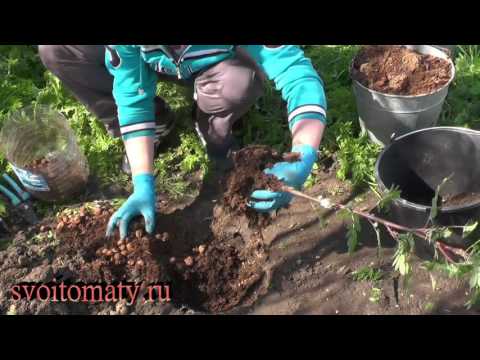

Watch this video on YouTube
Rowan care
There is nothing unusual in growing mountain ash. For normal growth and development of a plant, it is necessary to water it in a timely manner, weed it, loosen the soil surface, cut it off, feed it and carry out treatments in the fight against pests and diseases.
Such a tree needs watering only during prolonged drought. It should be borne in mind that the plant needs mandatory watering at the very beginning of the growing season and after planting in open soil, and another 15–20 days before the harvest will be harvested, and 2-3 weeks after that. It is recommended to make grooves around the perimeter of the trunk circle, into which water is poured during irrigation. For 1 tree for one irrigation, from 20 to 30 liters of water is taken, while the final volume of the liquid used depends on the condition and composition of the soil, as well as on the age of the viburnum itself.
The surface of the trunk circle must be loosened at the beginning of the spring period, during the summer this procedure is carried out 2 to 3 times. And the surface of the trunk circle must be loosened after the entire crop has been harvested. The easiest way is to loosen the soil the next day after rain or watering. When loosening, you need to pull out all the weeds. When the near-trunk circle is loosened, its surface must be covered with a layer of mulch again.
To make the mountain ash more productive, it will need systemic feeding. Starting from the third year of growth, humus or compost is introduced into the soil under the plant - from 5 to 8 kilograms and ammonium nitrate - 50 grams. At the beginning of June, 1 bucket of bird droppings (1:10) or mullein (1: 5) should be poured under the tree. Agrolife solution can be used instead of organic fertilizer. In the last summer weeks, 100 grams of superphosphate and 500 milligrams of wood ash must be added to the trunk circle.
Pruning is carried out at the very beginning of the spring period before the buds awaken. It is necessary to cut out all dried, diseased and growing shoots inside the crown, as well as those that depart at a right angle. Those varieties that bear fruit on last year's stems will need thinning and a slight shortening of the branches. If fruiting is observed on various types of fruit formations, then such trees will need periodic thinning and rejuvenation of the ringlet, as well as shortening of the skeletal branches.
The most important goal of rowan pruning is better and even illumination of its crown, this has an extremely positive effect on the yield of the plant. Due to the fact that such a tree has a pyramidal crown shape, the branches grow at an acute angle to the trunk, which makes them more fragile. When forming skeletal branches, you must try to make sure that they are brought out at an obtuse or right angle.
If the plant shows weak growth, then it will need anti-aging pruning. It is made for two or three year old wood, as a result of which the growth of new shoots is activated.
Diseases and pests
In May or June, you need to carefully examine the mountain ash, because it is at this time that the first symptoms of the disease or damage by harmful insects may appear. This plant is susceptible to the following diseases: anthracnose, septoria, brown and gray spots, powdery mildew, monoliosis, scab, rust, necrosis (black, nectric and cytosporous) and viral ring mosaic. If the plant was planted completely healthy, while all the rules of agricultural technology of this culture were observed during planting and caring for it, then the mountain ash may never get sick at all. The fact is that only weakened trees are susceptible to diseases. However, in spite of everything, it is necessary to periodically inspect the mountain ash in order to start treatment in a timely manner, if necessary.
Any of the types of necrosis, as well as mosaics, are incurable diseases. In this regard, we must try to prevent the tree from getting sick with them, and for this it is necessary to carry out a number of preventive measures. It is necessary to take a very responsible attitude to the choice of planting material, the site will need pre-sowing preparation, the purpose of which is to destroy pathogens. Also, when pests that carry viruses appear, it is necessary to get rid of them as soon as possible, and it is also very important that the near-trunk circle is always clean. Do not forget to make periodic examinations of rowan, because any disease is easier to cure at the initial stage of development.
Rowan is affected by the same diseases as other crops of the Pink family (apple, plum, pear). Moreover, the symptoms of diseases and methods of treatment are the same.
About 60 species of ticks and other harmful insects can settle on mountain ash, which injure stems, berries, seeds, leaf plates, flowers and tree buds.Most of these pests can settle on various fruit crops of the Pink family. Most often, the following settle on a mountain ash tree:
- Weevils... To destroy them, Karbofos is used.
- Bark beetles... To get rid of them, the plant should be sprayed with Confidor, Aktara and Lepidocide.
- Moths... To exterminate these pests, Karbofos, Chlorophos or Cyanox are used.
- Rowan gall mites... When they appear, the tree is sprayed with colloidal sulfur.
- Rowan moth... They are destroyed by Chlorophos.
- Green apple aphid... To destroy it, use Decis or Actellic.
- Shields... You can get rid of them if you spray the mountain ash with 30 plus.
- Apple fruit sawflies... In order to exterminate them, an infusion of white mustard is used. To prepare it, you need to combine 1 liter of water and 10 grams of mustard powder, everything is mixed and left for 24 hours. Before use, the infusion should be diluted with water in a ratio of 1: 5.
In order to prevent pests, the tree must be sprayed over the foliage before the sap flow begins; for this, a solution of copper sulfate is used (100 grams for 1 bucket of water). Spraying rowan and the surface of the trunk circle with Nitrafen, which is carried out in the spring, is also quite effective. Also, in order to prevent in the fall, it is imperative to rake all the foliage from the site and destroy it, while the soil in the near-trunk circles is dug up.
Rowan propagation
For propagation of red mountain ash, the vegetative and generative (seed) method is used. Of the seeds, the species mountain ash is most often grown. Seeds are sown in autumn. To begin with, they are taken out of the fruit and washed from the remnants of the pulp, then they need to be buried in the soil by 0.5–1 cm. From above, the surface of the crops must be covered with a layer of mulch (dried fallen leaves). If seed sowing is scheduled for spring, then they will need stratification. To do this, they are combined with coarse sand in a ratio (1: 3), then the mixture must be kept at room temperature for 4–8 weeks, and after that it is placed on the refrigerator shelf for vegetables for 3–4 months. The seedlings that appear need systematic watering and weeding, as well as loosening the soil surface around them. Seedlings are transplanted to the school in the autumn. A tree grown in a generative way begins to bear fruit at 4–5 years.
For propagation of valuable varietal rowan, vegetative methods are used, for example: green and lignified cuttings, grafting, layering and shoots. As a rootstock for grafting a varietal cuttings, it is recommended to take a seedling of Nevezhinskaya, ordinary or Moravian rowan grown from seed. The vaccination should be carried out in the first days of April, when sap flow has just begun, as well as in July or August. It is necessary to remove the dressing from the vaccination site after 20 days. The top of the rootstock should be trimmed, leaving a thorn. To this thorn, it is necessary to tie a growing varietal shoot.
If the mountain ash is own-rooted, then shoots can be used for its reproduction. Green cuttings do not root very well, on average 4.5–6 cuttings out of 10. And lignified cuttings root even worse than green cuttings.
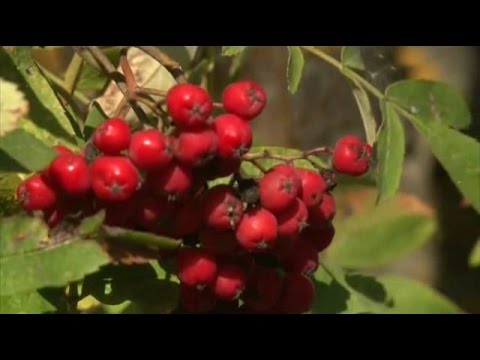

Watch this video on YouTube
Types and varieties of mountain ash with photos and descriptions
Most types of mountain ash are cultivated by gardeners. Most of these species are fruit, but there are also decorative ones.
Elderberry mountain ash (Sorbus sambucifolia)
Under natural conditions, this species is found in Japan and the Khabarovsk Territory, as well as on Sakhalin, Kamchatka and the Kuriles. This spectacular shrub reaches a height of 250 cm. A not very dense crown can be round or ovoid. Straight bare stems of dark brown color have a bluish bloom on the surface, gray branches with well-distinguishable lenticels. Unpaired leaf plates reach 18 centimeters in length and have lanceolate stipules.The composition of the leaf blades includes from 7 to 15 sharp-serrated leaves of an oval shape and dark green color, they are glossy and almost naked, located on petioles of light red color. Complex corymbose inflorescences consist of flowers with a diameter of about 15 mm and a white or pale red color. On the surface of the twigs and pedicels, there is a pubescence of a light red color. Edible berries are juicy, deep red in color and spherical in shape, they have a fifteen-millimeter diameter and a sweet and sour taste. They also have no bitterness and have a very pleasant scent. Fruits may not fall from the branches until spring. This plant is undemanding to the soil, and is resistant to drought and frost.
Rowan glogovina (Sorbus torminalis), or medicinal bereka
In the wild, this species can be found in the Crimea, Western Europe, the Caucasus, Southwestern Ukraine and Asia Minor. Such a mountain ash grows in not very large groups or singly. Such a tree can reach a height of 25 meters. Its trunk is covered with a dark gray bark with longitudinal cracks. Olive-colored bark on young shoots. Simple broad-ovate leaf plates reach 18 centimeters in length, heart-shaped and rounded at the base, they are also pointed, from 3 to 5 lobes are located at the apex. The front surface of the leaves is dark green glossy, and the back is pubescent. In autumn, the color of the foliage changes to yellow or orange. Loose corymbose inflorescences, reaching 8 centimeters in diameter, consist of small (about 10 mm in diameter) white flowers. Rounded berries, reaching a diameter of 1.8 cm, have a pale red or orange color, which gradually changes to brown. The mealy pulp has a sweet and sour taste. This species is highly resistant to frost, but not drought-resistant. There are 2 decorative shapes:
- with pubescent foliage;
- with pinnately dissected leaf plates.
Domestic mountain ash (Sorbus domestica), or large-fruited mountain ash (Crimean)
Under natural conditions, this species is found in the southern part of Western Europe and in the Crimea; it prefers to grow in the undergrowth of deciduous forests, singly or in groups. This plant is slow growing and reaches a height of 15 meters. The shape of the crown is broad-pyramidal or spherical. The bark covering the trunk is already fractured in a young plant. But the stems are almost naked, smooth and glossy. The composition of odd-pinnate complex leaf plates, reaching 18 centimeters in length, includes smooth glossy sharp-serrated lanceolate leaves, painted in green and having a length of about 50 mm. Broad-pyramidal branched tomentose-pubescent inflorescences, having a diameter of about 10 centimeters, consist of flowers reaching 15 mm in diameter and painted in white or pale pink. Oblong-ovoid or pear-shaped berries, reaching 30 mm in diameter, can be yellow-green, red or brown, have a mealy, fragrant slightly sweet astringent pulp, which includes many stony cells. Such a plant is resistant to pests, drought and frost. There are 2 forms:
- pear-shaped;
- apple-shaped.
Round-leaved rowan (Sorbus aria), or aria, or powdery mountain ash
In nature, this species is found in the Carpathians and in the mountains of Central and Southern Europe. The height of such a vigorous tree is about 12 meters. The shape of the crown is wide-pyramidal. The trunk is covered with brown-red or brownish bark, on the surface of the stems there is a tomentose pubescence. Leathery whole leaf plates of a rounded-elliptical shape are sharply double-serrate along the edge. During the opening, the foliage is white-felt, then the front surface of the leaves turns green.In autumn, the color of the foliage changes to various shades of bronze, because of this, the mountain ash looks like an alder outwardly. The scutes, up to 8 centimeters across, are composed of white flowers. Edible berries of a spherical shape reach 15 mm in diameter, they are colored red-orange or pink-orange. The sweet-sour mealy pulp is not as tasty as the sweet-fruited varieties. Cultivated since 1880. There are several garden forms:
- Dekaisne... Flowers and leaf plates of this form are larger.
- Edible... The shape of the leaf plates is elliptical or oblong. The berries of such a plant are somewhat larger than that of the main species.
- Chrysophylla... The foliage is pale yellow throughout the season. In autumn, it becomes oily yellow.
- Manifics... During the opening, the leaf plates are snow-white; in the summer, their front surface turns green. In autumn, their color changes to bronze. Red berries on the surface have pubescence in the form of a white pile.
- Majestic... The height of such a plant is about 15 meters. It does not form berries.
Rowan hybrid (Sorbus x hybrida)
This plant is a natural hybrid of intermediate rowan and red rowan. Under natural conditions, this species can be found in Northern Europe. Complex leaf plates combine simple pinnate and lobed leaves. The front surface of the foliage is green and naked, and the seamy side has a pale gray or whitish pubescence. Gardeners grow only one more hybrid - the Thuringian variety, which was obtained by crossing the round-leaved mountain ash and red mountain ash. In this tree, in comparison with the hybrid rowan, the blades on the leaf plates are not cut so much, while they are more blunt and wider.
Rowan ordinary (red)
A detailed description of this species can be found at the beginning of the article. It has a large number of decorative forms that differ from each other in the color of the berries, the shape of the crown and the color of the foliage, for example: Burka, liqueur, pomegranate, Michurin dessert, Russian, pyramidal, weeping, Beisner, Nevezhin, Moravian, or sweet, Fifeana, etc. All these forms retain their spectacular appearance throughout the growing season. Particular attention should be paid to the following forms:
- Nevezhinskaya... Outwardly, this variety and the main view are very similar. These plants are distinguished by the fact that the berries of Nevezhinskaya mountain ash do not have bitterness and astringency, even when unripe, when the main species can eat fruits only after the first frosts have passed.
- Rowan Moravian, or sweet... Found naturally in the Sudeten Mountains. The leaf plates are more delicate in comparison with other varieties, and the flowering of such a mountain ash begins somewhat later. The inflorescences can sometimes contain about 150 flowers. Red-scarlet berries have a juicy orange pulp and sweet-sour taste.
- Liqueur... This variety was born thanks to Michurin, for this he crossed chokeberry and red mountain ash. The color of the berries is black and purple. This mountain ash has a very high frost resistance.
- Pomegranate... The variety was born as a result of crossing large-fruited hawthorn and red mountain ash in 1925. The height of such a tree is about 400 cm.Smooth, glossy simple leaf plates are about 17 centimeters long. In the upper part, the leaves are whole elliptical or ovoid, and in the lower part they are pinnately dissected. Burgundy sweet-sour berries have a size equal to cherries. The species has a very high frost resistance.
- Burka... Born in 1918 when crossing red mountain ash and alpine mountain ash. Dark green simple leaf plates are pinnately dissected and slightly pubescent. The oblong brown-red berries are of medium size. The mountain ash remains very beautiful throughout the season.
- Michurinskaya dessert... This is a hybrid between liqueur mountain ash and German medlar. The height of the tree is only 300 cm, the crown is wide. Unpaired complex leaf plates reach 18 centimeters in length, they consist of 6 or 7 pairs of greenish leaves, the seamy surface of which is slightly pubescent. The medium-sized dark red berries are very similar in shape to those of the medlar. The tree has a high decorative effect and frost resistance.
Gardeners also cultivate rowan varieties such as: mixed, intermediate, or Swedish, alder, Köhne, Vilmorena, Amur and some others.
The best varieties of red mountain ash
- Bead... The plant is medium-sized. The berries are juicy and taste like cranberries.
- Vefed... The sweet-fruited variety has a high yield and frost resistance. The purpose of this variety is for table and dessert. Fruits of pink-yellow color are very effective.
- Solar... The variety is consistently fruitful. Deep orange berries with a blush of red color are very tasty and fresh, and ground with granulated sugar.
- Sorbinka... The variety is distinguished by its yield and frost resistance. The berries are red and large and can be eaten fresh or used for processing.
Also very popular are such varieties of red mountain ash as: Kirsten Pink, Red Tip, Carpet of Gold, White Max, Shimi Glow, Leonard Springer, Fastigiata, Integerrima, Jermins, Titan, etc.
Rowan in landscape design
Rowan tree in landscape design can play a secondary or major role. Gazebos and arches are decorated with weeping mountain ash, it is also planted on the lawn or on the edge of the forest, far from other trees, like a salt plant.
Such a plant looks great in a group with other shrubs and trees, for example, with pigs, spirea, snowberry or barberry. Rowan also goes well with conifers (thuja, pine, fir or spruce). Especially in the fall, when the motley rowan tree looks very impressive against the bluish or green background of conifers.
Also, this plant can be planted with deciduous trees: linden, black poplar, maple, ash and white willow. Most types of mountain ash are able to emphasize the spectacular viburnum, fieldfare, mountain ash, honeysuckle and wrinkled rose. From shrub rowan, you can create a hedge, against which perennial flowers will look great. When choosing a place to plant such a culture, one should not forget that it reacts extremely negatively to the polluted and smoky air that is inherent in cities.


Watch this video on YouTube
Rowan properties: harm and benefit
Useful properties of mountain ash
There is a lot of vitamin C in red rowan berries, it is even more than in lemons. The berries also contain vitamins P, B2, PP, K and E, as well as provitamin A, glycosides, amino acids, pectins, bitterness, tannins, organic acids (succinic, citric and malic), flavonoids, iodine, potassium, magnesium, iron , copper, manganese, zinc, alcohols, essential oils and phytoncides. Such berries are characterized by diaphoretic, hemostatic, choleretic and diuretic effects. In Norway, such a plant is used as a wound healing and decongestant, in Hungary it is used to treat dysentery, in Bulgaria, with the help of berries, kidney stones are removed.
Since berries contain a lot of vitamins, they are used to improve the condition of the body with diabetes, kidney and liver diseases, anemia, hemorrhoids, diseases of the digestive system, especially with gastritis, colitis and peptic ulcer disease.
Rowan juice stimulates appetite, therefore it is recommended to use it for rheumatic pains, exhaustion, kidney stones and bladder stones. This juice has the ability to eliminate edema, normalize metabolism, lower blood cholesterol levels, stop bleeding and has an antimicrobial effect.The juice is also indicated for use in gout, atherosclerosis, asthenia, capillary fragility, hypertension, arrhythmias, bleeding and malignant tumors, and also in case of carbon monoxide poisoning.
The flowers, bark, leaf plates and berries of the mountain ash tree have healing properties. Hypertension is treated with a decoction of the bark, for scurvy, it is recommended to take the drug from the foliage, since they contain a lot of vitamin C (more than in berries). Preparations from flowers and berries are used for diseases of the gastrointestinal tract, metabolic disorders and colds.
Such a plant can also be used externally for wounds, various inflammations, burns and warts.
In the confectionery industry, rowan berries are used as raw materials, which are a multivitamin agent. They are used for the production of sweets, liqueurs, vodka, liqueurs and liqueurs, jam, marmalade, jelly, marshmallow, preserves and soft drinks.
A saturated decoction of mountain ash berries is used in veterinary medicine to treat pulmonary diseases in animals.
To improve health in the morning, it is recommended to use a mountain ash drink, which has tonic properties. In the evening, pour one large spoonful of fresh or dried rowan berries, barberry and rose hips into a 3 liter thermos. It is filled with freshly boiled water and tightly closed. This tea should be drunk from morning until lunchtime, then boiling water is again poured into the thermos, they wait until the drink is infused, and they drink again. When the second drink is finished, take out the berries, crush them well and put them back in a thermos filled with freshly boiled water. You can use one serving of berries 3 times.
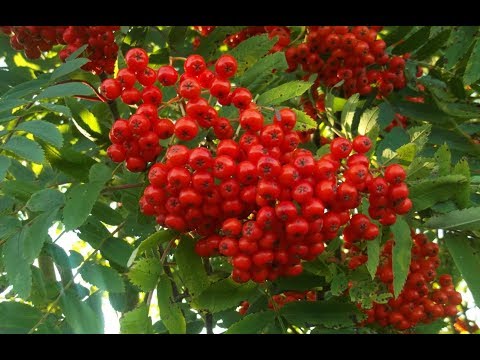

Watch this video on YouTube
Contraindications
Rowan berries are forbidden to be consumed by people who have suffered a heart attack or stroke, as well as with coronary heart disease and with increased blood clotting. Also, they are not recommended for people with high acidity of the stomach.

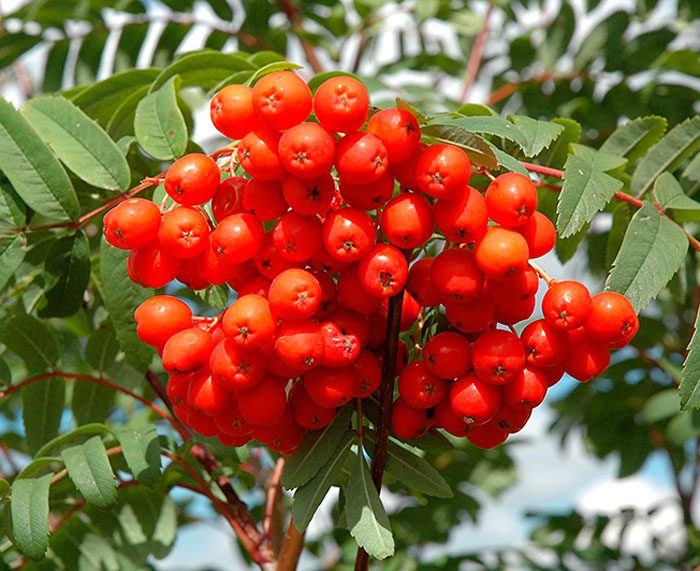
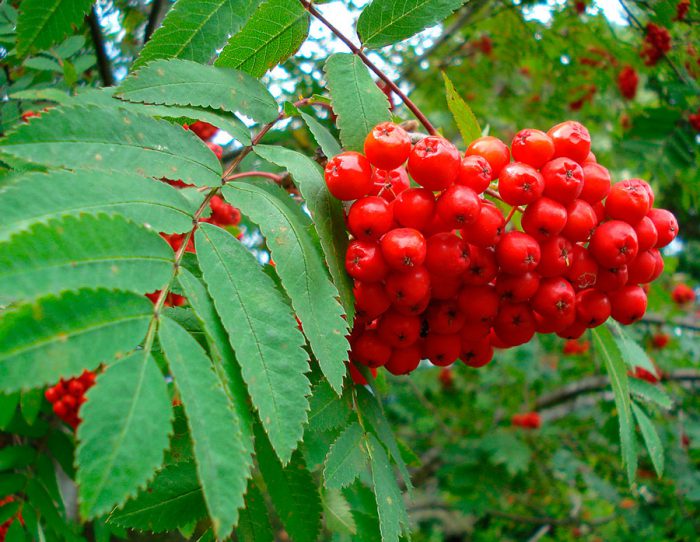
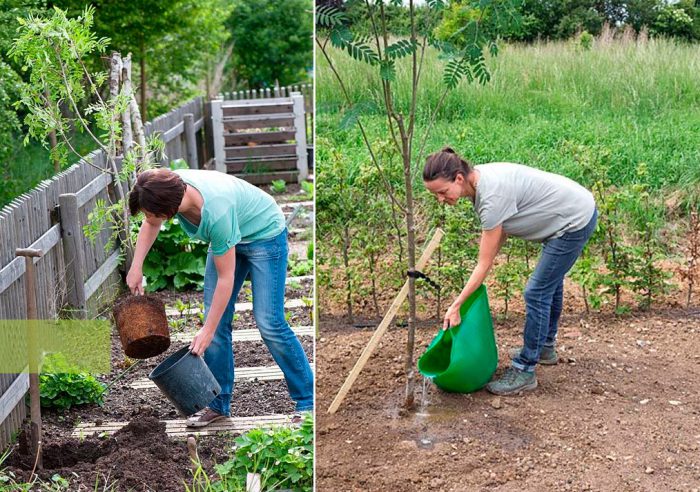
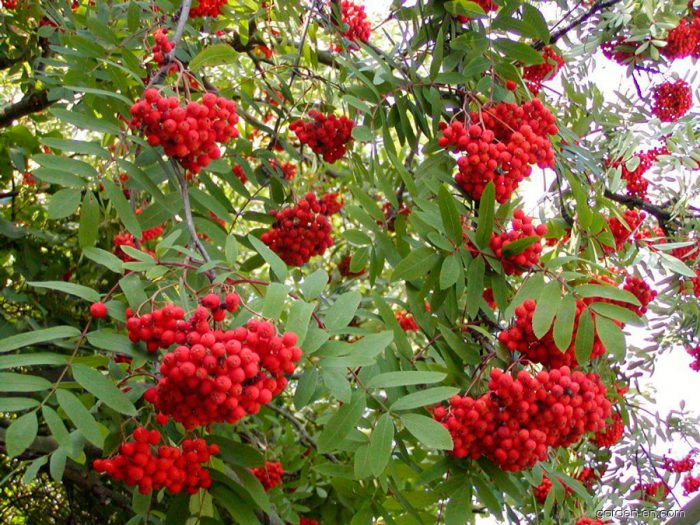
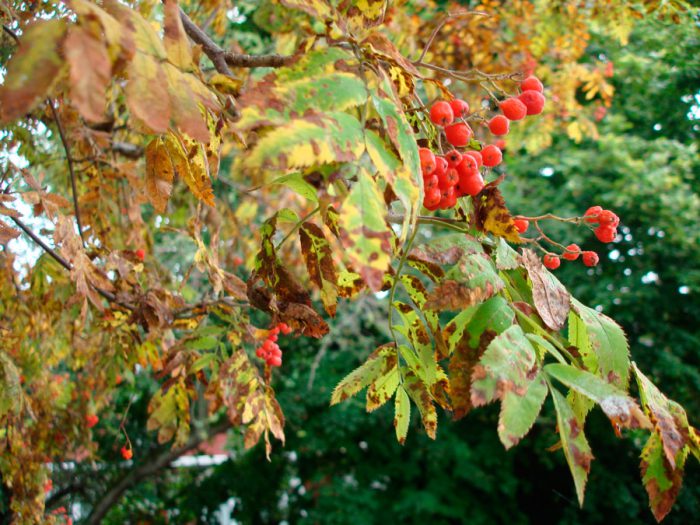



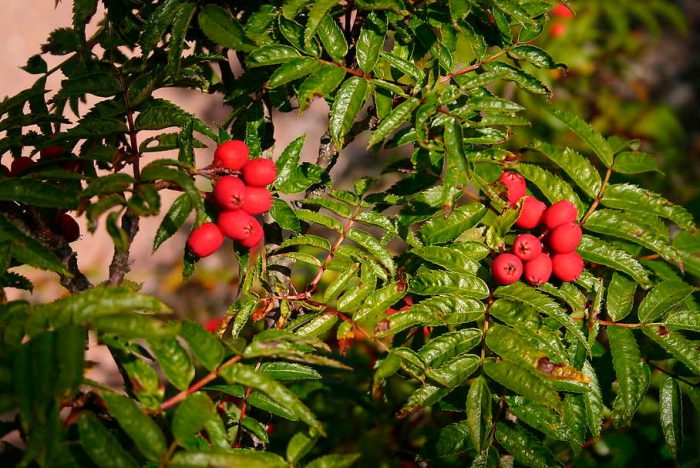
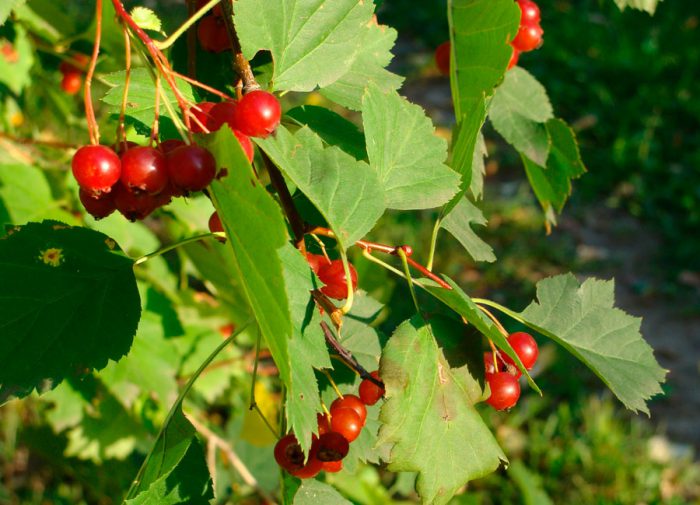
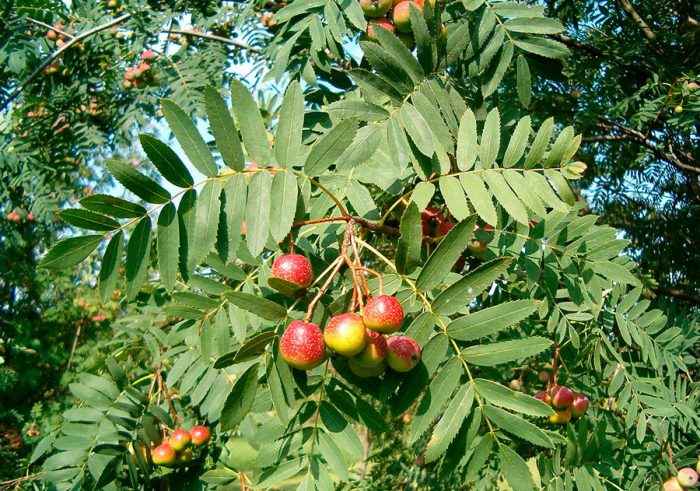
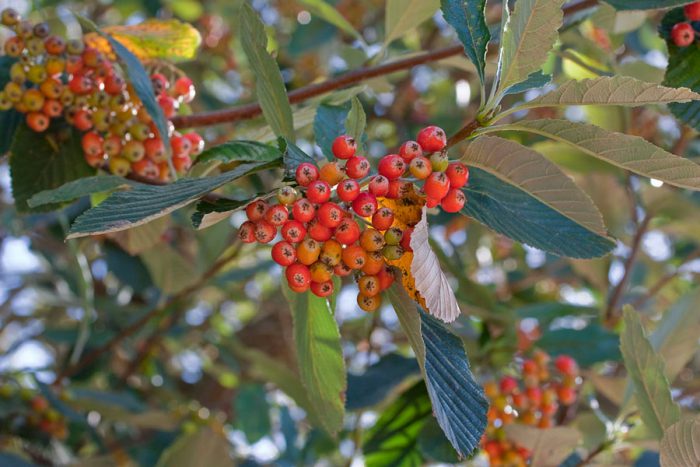
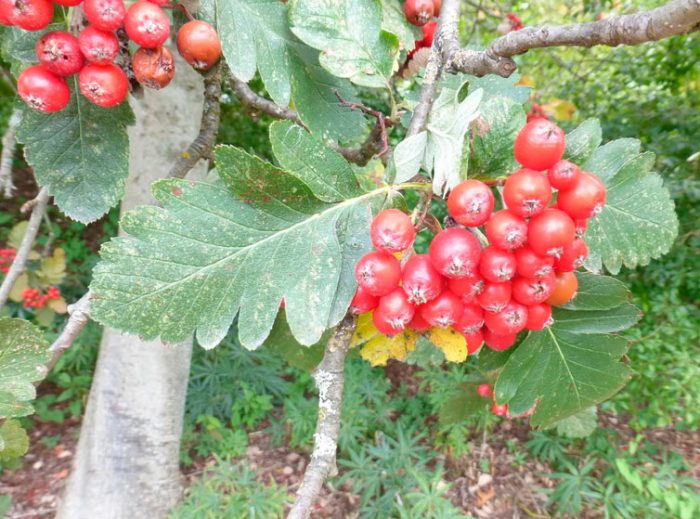
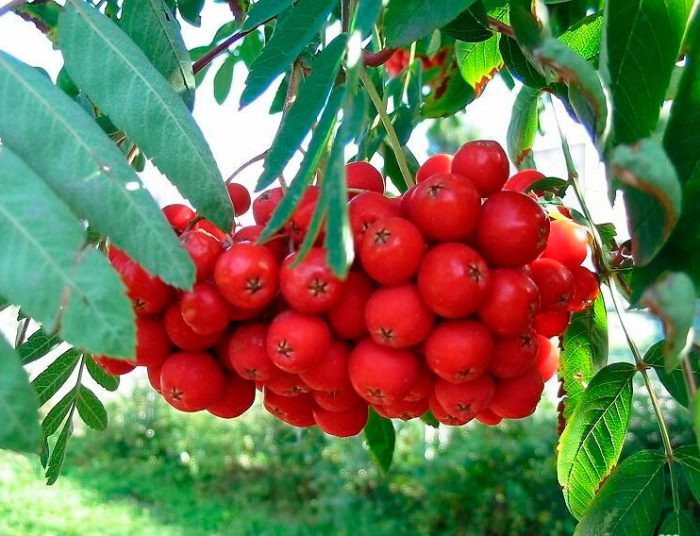


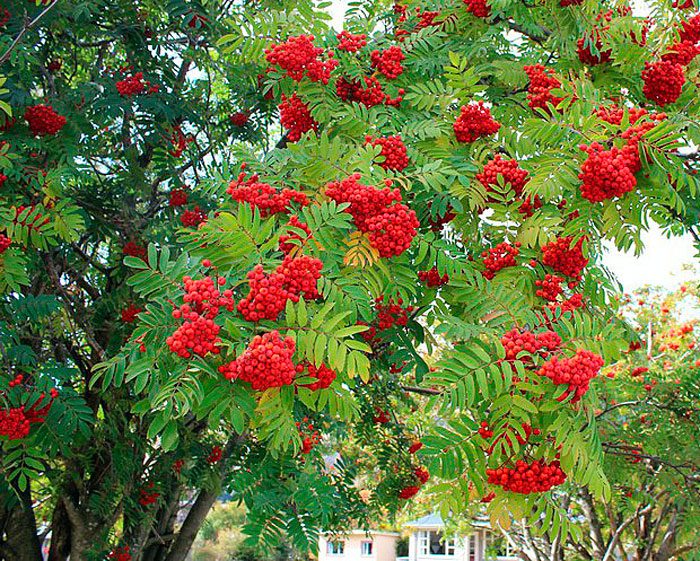
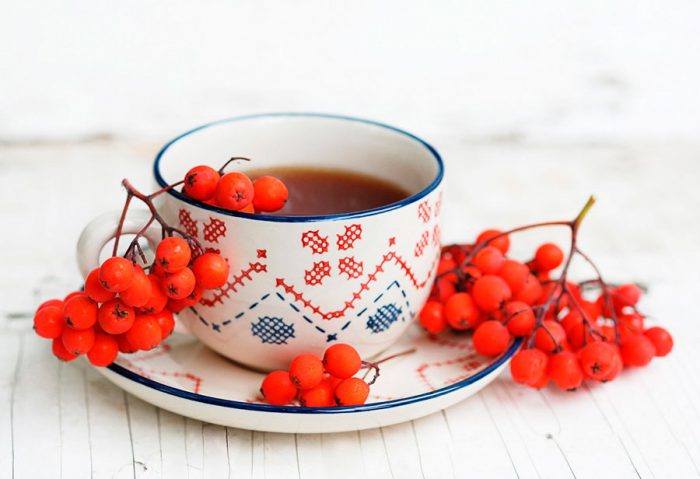



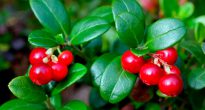



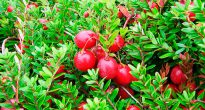


Rolling beautiful and warm wood.
Hello. In the spring, they planted rowan. By the end of August, it has developed well. But suddenly it dried up. The branches are alive. Mench is in panic !! What is the reason? What to do?